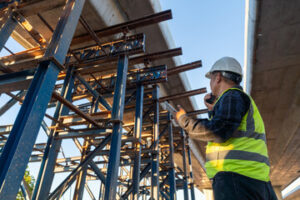Whether you want to set a festive mood for evening entertaining, highlight a garden bed or water feature, or reduce tripping hazards on the stairs, landscape lighting can add a sophisticated touch to your home. First, decide why you want to light your yard. Then, select the lights to fit your goals and budget. Be sure to consider the beam spread, lumens, and color temperature. Contact Orlando Lighting now!

Illuminating walkways is important for safety, preventing trip hazards, and adding a warm and inviting atmosphere to your yard after dark. Path lighting can also highlight landscape features and plants along your walkway. There are many options for pathway lights, including spotlights, floodlights, and hardscape lighting. The key to creating a great lighting scheme for your walkways is to have the right balance of light intensity. Overly bright paths can look glaring and unpleasant, while too little light can create a spooky and unsafe feeling.
Spotlights, the most common type of landscape lighting fixture, come in various beam widths and wattages, making them a versatile option for your outdoor space. They can uplight trees, highlight a special plant, or create drama with objects or sculptures. The most popular spotlighting techniques include highlighting, silhouetting, shadowing, grazing, and moonlighting.
A more modern and versatile option for landscape lighting is hardscape lighting, which uses LED technology to wash or graze walls with light. It is available in many styles, from simple brackets to sleek orbs. Hardscape lights are a good choice if you want your walls to shine with soft light but need more time or budget for an elaborate lighting project.
Pathway lighting is also excellent for highlighting specific landscape elements, such as a water feature, statue, or garden decoration. The most common pathway lighting technique is simply placing fixtures in a line, but if you have an irregularly shaped path or want a more natural-looking effect, consider stabling your lights instead.
One final note about path lighting is that it is important to understand how far apart to place your fixtures. Too far apart, and they won’t illuminate your walkway, but too close, and they may create a “runway” effect that looks unsightly. This is another reason to get a professional opinion when designing your lighting system; they can help you figure out the perfect spacing for your needs.
Landscape lighting adds drama and beauty to a home while also increasing safety. While it is not always the first feature that homeowners consider when planning a landscaping project, it should be part of the process from the beginning. It can help guide family members and guests safely while enhancing your property’s curb appeal.
When done well, the right landscape lights create a warm and inviting glow that doesn’t make you think about the fixtures themselves. But how do you achieve that effect? It combines techniques that all begin with the same principle: focusing light on a specific object.
For instance, you can use uplighting to emphasize a large tree by shining light at the base of the trunk and extending the illumination through the canopy. Uplighting is great for trees because it highlights their shape and can create beautiful, dramatic shadows.
Other objects that can be highlighted with this technique include special or unique features such as a sculpture, fountain, statue, or garden structure. Similarly, this technique is often used to draw attention to a garden plant. Another way to highlight something is through backlighting. This is accomplished by placing a lighting fixture behind the item to be illuminated and focusing light on it from a lower angle so that the source of the lighting cannot be seen.
Downlighting is another common landscape lighting technique, and it is the opposite of uplighting. This type of lighting is focused downward to shine on the ground and other low-level objects. It can be used to highlight stairs and walkways and is ideal for areas frequently used after dark.
Downlighting is also an excellent way to highlight architectural features such as columns, walls, or other structures. In addition, it can be used to add depth and dimension to a yard. There are a variety of landscape lights that can be used for this purpose, including spotlights and floodlights. Specialized lighting options, such as restaurant and tiki torches, can be positioned on the ground or attached to items such as plants or trees.
When planning a landscape lighting system, it is important to consider the lights’ function and aesthetics. For example, a deck with stairs must be well-lit for safety reasons. The same goes for a meandering path or a fountain that needs to be lit so you can enjoy it day and night. This functional landscaping helps ensure family and guests can safely move about your property without the risk of injury.
There are plenty of ways to add accent lighting for the rest of your landscaping. This can include up-lighting to create shadows that play off of vertical features like trees, statues, and other tall structures, wash lighting (which illuminates an area with a wide beam that minimizes hot spots and density), and spotlighting to show off a particular plant specimen or architectural detail.
Accent lights are essential to any landscape lighting design, and the right fixtures can make all the difference. Look for LED light fixtures that consume less energy and last longer than traditional bulbs. Durability is also key; choose fixtures made from corrosion-resistant materials like copper or brass that won’t rust when exposed to salt spray and harsh weather.
Another great use of landscape lighting is highlighting water features like ponds and fountains, yard sculptures, and ornamental shrubs. The right lighting can showcase these elements, highlighting their texture and color and giving them new life after dark.
Finally, remember that lighting can highlight other outdoor features on your property, including patios and pergolas, flower beds, garden walls, and walkways. With the right fixtures, you can transform any space into a bold, illuminated showcase that shows off your unique style and impresses your guests.
Professionally done landscape lighting is a great way to get the most out of your home and yard while adding curb appeal to help it stand out when it comes time to sell. It is a relatively inexpensive way to increase your home’s value and create a warm, welcoming atmosphere for family and friends.
Landscape lighting should be multi-purpose – it should look great, boost curb appeal, and make your yard safe. That’s why it’s important to work with a professional who can consider your family’s and home’s needs. When you have lights in place that can light up walkways and stairs, your guests will feel safer wandering around the property after dark. In addition, security lights can act as a deterrent against burglars by alerting neighbors or passersby to anyone on the premises.
Many different types of landscape lights can illuminate your home or business. These include recessed lighting, wall-mounted fixtures, spotlights, floodlights, and solar bollards. When choosing a fixture, it’s important to consider its lumen output, beam spread, and color temperature. The bulb type will also play a role in the final result of your landscaping lighting.
I consider soffit and recessed lighting if you’re looking for a more natural approach to your landscape lighting. These lights can be installed in the eaves and on your house’s roof, giving it a more organic look. They are also good for areas often used at night, such as decks and water features.
Another popular option is to use hardscape lighting, which is small lights installed on or in outdoor structures like walls and fences. These lights are designed to wash walls with light and can effectively highlight a space’s texture, pattern, and depth.
With the right landscape lighting, you can highlight your home’s architectural features and showcase your prized plants and trees. The right combination of fixtures can turn your home into a nighttime showcase that will impress your friends and neighbors.



